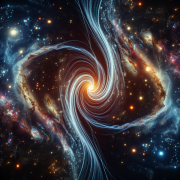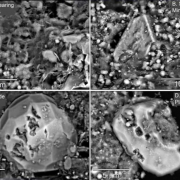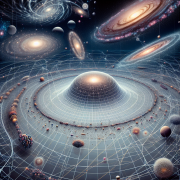Unveiling Quantum Mysteries: High Harmonic Generation in High-Pressure Superconductors
In the fascinating realm of condensed matter physics, high pressure environments can lead to the uncovering of novel states and phenomena. A prime example of this is the emergence of superconductivity at near-room temperatures in high-pressure hydrides, notably H3S and LaH10. These advancements have significantly pushed the boundaries of superconducting transition temperatures, yet, the actual process enabling superconductivity under such extreme conditions has long been an enigma. This gap in understanding largely stems from the complexity involved in deciphering the ultrafast dynamics and intrinsic properties of electrons within these high-pressure quantum states.
Unveiling the Mysteries with High Harmonic Generation (HHG)
High Harmonic Generation (HHG) stands as a groundbreaking technique in this exploration. This mechanism, which involves the up-conversion of laser light to frequencies multiple times higher than the original, delves deep into the nonlinear interactions between intense light fields and matter. Through HHG, scientists have been able to capture the intrinsic atomic and electronic blueprints of materials, making it a potent tool for piercing through the veil that shrouds the nature of quantum states under high pressure.
Revolutionary Insights from Prof. Meng Sheng’s Research Group
A pioneering study conducted by the research group led by Prof. Meng Sheng from the Institute of Physics of the Chinese Academy of Sciences offers seminal insights on this front. With the assistance of sophisticated first-principles time-dependent density-functional theory simulations, the team meticulously explored the HHG dynamics within the high-pressure superconductor H3S. Their findings, published under the title “Solid-state high harmonic spectroscopy for all-optical band structure probing of high-pressure quantum states” in the esteemed Proceedings of the National Academy of Sciences, mark a significant leap in our comprehension of these quantum states.
Decoding Electron Behavior through HHG
One of the study’s cornerstone discoveries is the revelation that HHG in high-pressure superconductors is intrinsically linked to the materials’ electronic structures and electron-phonon coupling (EPC). By unraveling the nuances of HHG spectra, the researchers could decode the band dispersion and EPC traits. This not only demonstrates the EPC’s profound impact on electron dynamics near the Fermi level but also corroborates the phonon-mediated superconductivity mechanism in these high-pressure environments. Consequently, the extracted information from HHG spectroscopy presents a novel, all-optical pathway to probe the complex interplay between band structure and electron-phonon interactions in high-pressure quantum states.
For further reading on this groundbreaking research, access the full article here.
Implications and Future Directions
The implications of these findings are vast, extending far beyond the confines of theoretical physics. They pave the way for innovative methodologies in material science, quantum computing, and potentially lead to the development of more efficient, high-temperature superconductors. As we continue to demystify the quantum world, the role of sophisticated tools like HHG spectroscopy becomes increasingly indispensable. It’s an exhilarating time for scientists and enthusiasts alike, as each discovery brings us one step closer to harnessing the full potential of quantum materials.
Focus Keyphrase: High Harmonic Generation in High-Pressure Superconductors









Leave a Reply
Want to join the discussion?Feel free to contribute!